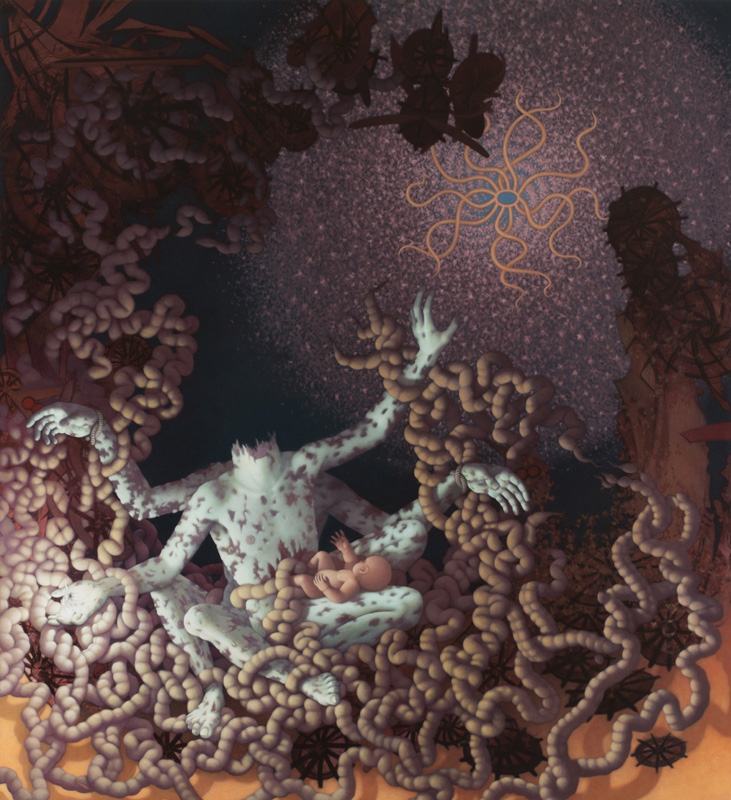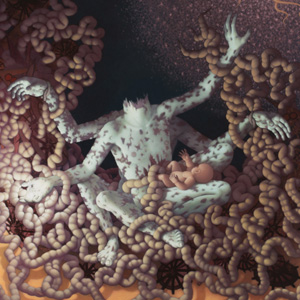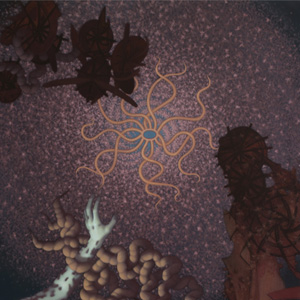
 |
| Eternal Flame 1992-1993, acrylic on canvas 72 x 66 in. |
Eternal Flame |
The general theme of Eternal Flame is the birth/life/death cycle, which reflects my ongoing focus on the ideas of change and transformation. It was painted in 1992-1993 during a transitional period between my early abstractions and subsequent representational work. Although most paintings of this period are characterized by placing one or more human figures into a world of abstract forms, Eternal Flame has only a few abstract forms and was one of the last paintings to use them. The composition consists of two basic parts – a foreground earth plane and a background sky and constellation space. Abstract forms populate the foreground earth plane with many of them set in silhouette against the sky space beyond. Those at the bottom and some above are stylized "wheel of life" forms that symbolize lost souls, floating about with the hope of transcendence. Entangled among the abstract forms and dominating the foreground is a huge twisted mound of intestines. They rise up toward the sky as if they have a life of their own. Sitting atop, tied to and entwined among the intestines are two headless figures. Their wound-riddled deteriorating bodies are positioned so they appear to be one figure. Seen as one they represent the Hindu god Shiva with his multiple arms. In Hindu tradition Shiva's role is to destroy the world in order to recreate it. As such the Shiva figure supports the birth/life/death cycle theme. |
 |
 |
|
Also reiterating the theme is an infant lying in the lap of the Shiva figure. Its pink coloration symbolizes birth and is in stark contrast to the deathly bluish-gray color of the figure. Two hands of the Shiva figure are tied to the intestines by ropes and express acquiescence and oneness with them. Another rises up toward the constellation as if beckoning it. The last hand reaches out with a pure white flame rising from its palm, illuminating the entire picture and symbolizing the light of hope and new life. The background space consists of a dark space filled with a large circular constellation of stars. At the center of the constellation is a swirling vortex that gives way to a blue transcendent space beyond. A large abstract form is positioned in front of the constellation and is symbolic of the eye-of-God. Emanating from the eye are twelve tendrils that symbolize the constant movement of time. Overall it is a transcendent space with each glittering speck of the constellation representing millions of souls being watched over by the eye-of-God. Overall Eternal Flame possesses a magical quality with its dramatic lighting, richness of forms, dynamic energy, and compositional complexity. This tempers the unsettling reactions some viewers may experience from the use of headless desiccated figures and the winding mound of intestines. In the end I have tried to create an engaging and thought provoking work based on a timeless theme. - Brian Mains, February 2021 |